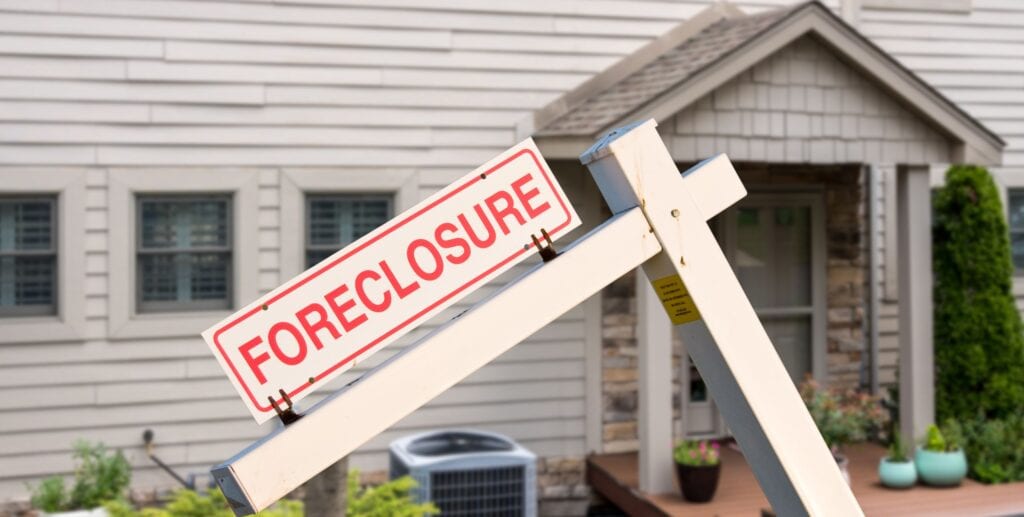News of a potential housing market correction often causes many Americans to be concerned about the global economy, but this concern may be unfounded. A correction isn’t necessarily a bad thing. It may help to improve housing demand and inventory when property values increase faster and higher than the norm.
Housing market corrections impact people differently, and there are both pros and cons to consider depending on whether you are buying or selling. For the real estate investor, a market correction may represent a great opportunity to purchase a property at a discount and grow your investment portfolio.
What Is a Housing Market Correction?
A housing market correction is when the real estate market experiences a downturn and property values decrease. Housing market corrections may be regional or national and occur when prices exceed what the market can sustain.
Instead of being a cause for concern, a correction may benefit the overall economy as the real estate market returns to sustainable levels. The overall value of the real estate market typically decreases by 10% or less in a correction.
A housing market correction differs greatly from a housing bubble and market crash. A housing bubble is when a rapid increase in home prices occurs due to limited supply and high demand.
In a housing bubble, home values are driven far above what the market can sustain when bidding wars break out. Speculators hoping to generate quick profits also contribute to the rapid price increases. The bubble then bursts, and prices crash when the demand decreases or the supply increases (or both).
Unlike in a housing bubble where prices decrease rapidly and significantly, housing prices drop much less and slower in a correction. The lower prices allow buyers to get better deals and have more homes to choose from. On the other hand, sellers may get less, and their homes may take longer to sell.
What Causes a Housing Correction?
Several factors may contribute to a housing market correction. However, all of the factors do not have to be present for a correction to occur. Property values could decrease with just one.
First, the availability and affordability of mortgage credit may cause the housing market to contract. Mortgages may be harder to obtain due to economic uncertainty. For example, news of the closing of a local manufacturer that employs many people could cause local lenders to be more cautious in approving home loans.
Lenders may also tighten their lending standards during recessions or when analysts predict a recession is near. Fewer people will then qualify for mortgages, resulting in decreased housing demand.
Job losses are another important factor. During an economic contraction, many companies downsize their workforces to save money, streamline processes, and stay competitive. This results in fewer people who can qualify for mortgages.
Finally, rising interest rates directly impact the cost of borrowing. Depending on the amount borrowed and the loan term, a 1-2 point interest rate increase could add tens of thousands of dollars to the total cost of borrowing over the life of a loan. The increased monthly payments make homeownership unaffordable or force buyers to settle for lesser expensive homes.
How Do Housing Corrections Impact Buyers?
If you are thinking about investing in a property during a housing correction, there are some important pros and cons to consider. Be sure to consider these and other factors carefully before making an investment decision.
Pro: Properties are more affordable
As an investor, the primary benefit of a housing correction is that you can take advantage of lower home prices. This could allow you to get a great deal on new assets or buy more properties.
Pro: You may have more buying options
If fewer people buy homes because of economic uncertainty or rising interest rates, there may be more inventory on the market to choose from. This may allow you to buy a property that suits your preferences and needs better. It could also mean less potential for a bidding war to break out among buyers.
Pro: You may have more demand for your rental properties
When fewer people buy homes, the demand shifts from buying to renting. As a real estate investor, the demand for your rental properties may increase during a housing correction. This may allow you to charge a premium or be more selective with tenant applications.
Con: You may have fewer buying options
This isn’t a contradiction to the previous point. When real estate prices fall, some sellers may take their homes off the market to wait for better market conditions, resulting in less inventory in some places. Whether there is more or less inventory in a correction will vary depending on the location.
Con: Stricter lending requirements
If market uncertainty is a factor that contributed to the correction, lenders may tighten their lending standards and make obtaining a loan more difficult. However, this doesn’t mean you can’t get the funding you need to grow your portfolio.
If obtaining a loan through a traditional lender isn’t possible, you may be able to get the funding you need through a hard money loan or private lender. Although these lending options typically charge higher interest rates, you may be able to refinance after the correction ends and the economy stabilizes.
Con: Higher interest rates
Because increasing mortgage rates are a common cause of corrections, you may have to pay more in interest over the life of the loan. This could represent a significant increase in the cost of borrowing.
Con: Potential decrease in home value
If you buy a home in a market correction, the home’s value may decrease after you buy it, reducing the equity you have in the home. It could also result in a situation where you are underwater on the home, which means you owe more on your mortgage than the home is currently worth.
How Do Housing Corrections Impact Sellers?
Due to falling prices, a housing correction may not be the best time to sell. There are some important considerations for investors; however, that may make selling during this time a smart move.
Pro: Sell an underperforming asset
Although a housing correction is when national prices fall, selling may make sense if you have an underperforming asset or a property that is challenging to maintain. Removing it from your portfolio could allow you to reinvest in an asset with greater long-term potential.
Pro: Reduce or eliminate debt
If you are experiencing cash flow or liquidity problems, selling a house or other investment property in a housing correction may allow you to reduce or eliminate debt. Whether this is a viable strategy depends on how much equity you have in the property and how much revenue it generates.
Con: Your home may sell for less
Because home prices decrease in a correction, you may get lower offers than before the market downturn. This may not always be the case, however. The home’s location may be an important factor. If the house you want to sell is in a popular tourist destination with a strong demand for short-term rentals, your home may sell for a premium.
Con: Your home may take longer to sell
When interest rates rise, and there are signs of economic uncertainty, fewer people may be interested in buying homes. This could result in more properties for people to choose from, which may mean you get fewer offers and your home stays on the market longer.
Con: Buyers may be more demanding
When prices fall, and there is less competition, buyers may request more seller concessions to sweeten the deal. For example, they may ask the seller to pay for part or all of the closing costs. They may also request upgrades to the home or for the seller to include furniture and accessories.
How Long Do Housing Corrections Last?
How long a housing market correction will last is often difficult to predict. It may continue until the factors that caused it stabilize. If a housing market correction is caused by increasing mortgage rates, for example, the correction may continue until the Federal Reserve stops increasing rates, inflation cools, and consumer confidence increases.
Because the duration of housing market corrections is uncertain, waiting until the market stabilizes to make investment decisions may not always be beneficial. Depending on your objectives, long-term goals may outweigh the negatives of buying or selling when housing prices decrease.
What Does the Market Look Like After a Housing Correction?
A housing market correction will typically end when housing prices begin to increase again. Key indicators of stable prices include an increase in both the supply of properties for sale and an increase in market demand.
Although some people are forced to move in unfavorable market conditions due to job transfers and other reasons, many buyers will wait to shop for larger homes or look for better neighborhoods until they believe their investment will increase in value over time. No one wants to be underwater on a mortgage.
How Does a Housing Correction Affect Real Estate Investors?
Although a housing correction may present an opportunity to acquire new properties at a discount, some may need a new investing approach to achieve their goals. This could mean investing in different types of properties or using different investment strategies to diversify your portfolio and minimize risk.
Investing in different types of properties may allow you to enter new markets, increase revenue, and stabilize cash flow. If you are currently investing in storage facilities, for example, acquiring single-family homes to rent on the short-term market in popular tourist destinations may allow you to take advantage of a local rental shortage.
If you primarily focus on single-family homes as long-term rentals, you could acquire additional homes to rent in the mid-term market. This could allow you to take advantage of the need for corporate housing for travel nurses and other professionals in growing markets.
Focusing on a new investment strategy may also be beneficial when real estate markets are contracting. If you currently use a short-term flipping strategy, like fix and flip, you will get progressively less when you sell as the market contracts. This may be a great opportunity to try a mid or long-term strategy to take advantage of the eventual market rebound.
The Bottom Line
A housing market correction may be a great time for real estate investors to obtain properties. Because the length of a correction is difficult to predict, timing the purchase of investments to minimize risk may be challenging.
If you sell a home in a housing market correction, it may sell for less than it would when prices increase. It may also take longer to sell, and buyers may demand more seller concessions. Selling a house or other property in a correction may still be beneficial if you need to reduce or eliminate debt or remove an underperforming asset from your investment portfolio.
Join the Community
Our massive community of over 2+ million members makes BiggerPockets the largest online community of real estate investors, ever. Learn about investment strategies, analyze properties, and connect with a community that will help you achieve your goals. Join FREE. What are you waiting for?
Note By BiggerPockets: These are opinions written by the author and do not necessarily represent the opinions of BiggerPockets.
















